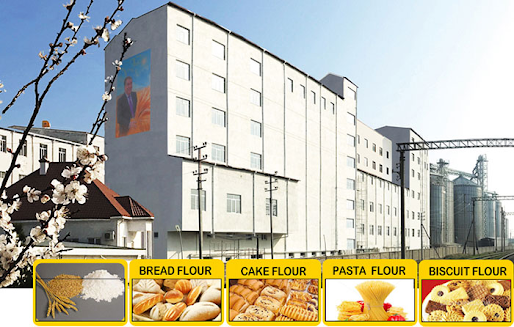Do You Know the Steps of Wheat Milling?
Wheat is one of the most consumed grains in the world. It comes from a type of wheat that is grown in countless varieties around the world. In the beginning wheat grinding required manual grinding, but with the development of technology it is now possible to grind large quantities by wheat flour milling machines, which has greatly increased productivity.
Flour milling is the process of grinding the grain into flour. Milling of wheat involves separating the bran and germ from the endosperm and reducing the endosperm to fine flour. It can be divided into the following steps.
Step 1: Cleaning
Sticks, stones and other such impurities are removed from the wheat. Then, the whole pure wheat is sent to the conditioning tank for further processing.
Step 2: Tempering and Conditioning
At this stage, the wheat is soaked in water in order to easily remove the bran. Conditioning is done prior to milling to ensure uniform moisture content throughout the grain. The moisture helps prevent the bran from breaking down during the milling process.
Step 3: Grinding
This is a particularly important stage where conditioned and cleaned wheat is mixed to produce the desired type and quality of flour.
Step 4: Separation
The grains then pass through a series of rolls that rotate at different speeds. The bread rolls separate only the small wheat grains in order to separate the inner white part from the bran.
Step 5: Milling
The wheat is milled into pieces by a machine. It is then passed through a sieve, from which the coarse meal is further processed by repeated grinding and sieving. The meal is then transformed into fine flour, wheat germ and bran.
Step 6: Blending
Here, the ingredients are mixed to produce different flours. For example, a mixture of wheat bran and white flour produces whole wheat flour.
Types of Flour
The early flours produce white flour that becomes less white in the later stages and the number of bran particles increases. The mixture of white flour and other streams produces brown flour When all other streams are mixed in their original quantities, you get whole wheat flour.
It should be noted that the type of flour to be produced is influenced by the different qualities of the wheat entering the mill. Further variations in characteristics, such as flour color, must be ensured by mixing the various flour streams together at the time of milling.
Are you interested in learning more about Flour Milling Machines for sale and how they can benefit you? Contact us today to secure an expert consultation!


评论
发表评论